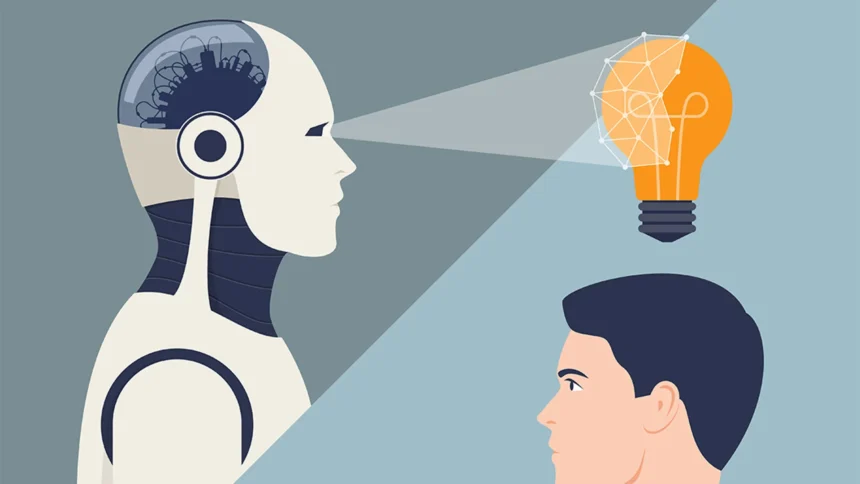Companies are waking up to the fact that traditional hiring processes often fall prey to unconscious human bias. From name-based discrimination to skewed evaluations based on gender, age, or education background, such bias not only damages diversity goals but also leads to the loss of great talent.
With the powerhouse of AI in hiring, a revolutionary concept that employs data-driven algorithms to bring objectivity, consistency, and fairness into recruitment. But how could artificial intelligence be bias-free when humans made it to begin with?
Let’s take a look at a little on what is happening with algorithms that target algorithmic bias, how firms are reducing hiring bias with AI hiring tool, and what it takes to guarantee AI recruitment ethics and fairness amid today’s recruiting environment.
What Is Hiring Bias? And Why Do We Still Have It?
A hiring bias is when an irrelevant consideration, such as a person’s name, ethnicity, gender or even tone of voice unfairly affects the hiring decision. Even if you have structured interviews and policies, people making decisions inject subconscious preferences.
For instance, we know that identical resumes are called back less when “ethnic-sounding” names appear on them than when traditionally “white-sounding” names do. Other studies have illustrated how appearance, age or gaps in employment can rip the very fabric of results. It’s these consistent patterns that have caused organisations to seek beyond human judgment, at automation and fair recruitment technology.
The Promise of AI: Fair, Consistent, and Data-Driven
Hiring AI is not about replacing human recruiters. Rather it provides all the more impartial data-driven insights to the decision making. By sifting through vast amounts of data, job descriptions, résumés, warnings to and performance evaluations from employees and more than 100 other attributes that could help predict patterns of employment success or failure, AI can alert recruiters to possible incongruities and help even the playing field.
Next-Gen AI hiring platform can:
– Parse resumes regardless of name, gender, and perceived demographic/background opportunities.
– Judge candidates strictly by credentials and measurements of ability
– Standardize interview questions and rating rubrics
– Point out old hiring practices that show trends of bias
– Always update as n etails are learned incrementally over time.
Put simply, AI turns hiring from an intuition-guilded art into a science-led process based on skills, fit and merit.
How Bias Gets Baked Into Our Algorithms: The Core Mechanisms
One of the largest advances in AI recruiting involves detecting subtle hints of bias permeating our hiring pipelines. Using algorithmic bias detection, AI can review previous hiring data to detect patterns that would be overlooked by human eyes.
For instance:
- Disparate Impact Analysis: AI can help us determine if certain groups of people (e.g. women, ethnic minorities) are being disproportionately screened out at specific parts of the funnel.
- Natural Language Processing (NLP): It can read job descriptions and flag gendered language (“strong”), or exclusionary language (“native English speaker”).
- Predictive Modelling: AI can model how likely a candidate is to be successful in their role, and see if the thing it is looking at age or education, for instance – unduly affect hiring predictions.
This information enables organizations to redesign workflows proactively and more inclusively and equitably.
AI Hiring Tool Features to Lessen Hiring Bias
Smart AI hiring tools are build with fairness in mind:
- Blind Screening: Hiding candidate information, such as name, sex and the year of graduation, during assessment.
- Diversity Reporting Dashboards: How to Visualize The Breakdown By Applicant and Hires demographics
- Bias Auditing: Routinely checking algorithms for biases to ensure fair results
- Interview Intelligence: We analyze our recruiter’s speech pattern and ensure a consistent question is spewed!
- Content Generators: How to Phrase Job Posts That Speak to Every Group or A gendered Language!
And for those businesses looking to a hiring platform for small business, it is a cheap and easy no-brainer that does not require an HR department to hack away at the details.
The Risk of Bias in AI Itself
Though AI can help counter human biases, it’s worth noting that algorithms are only as fair as the data used to train them. If hiring data from the past is skewed, for example, because it was based on a history of discrimination against particular groups of people (something from which no industry is immune), then the algorithm could also end up reproducing that bias at scale. This is where the ethics of AI recruiting are such an important discussion.
Ethical AI employment platforms take the following steps:
– Pre-deployment bias testing: Apply the model to a variety of scenarios and groups
– Open Ballots: Explaining when one candidate rated over another.
– Constant re-training: The models are updated to capture modern trends and not fortify old stereotypes.
– Human Oversight: Enabling recruiters to review, override or validate AI suggestions
When built with safeguards, A.I. takes away human bias rather than adding to it.
Real-World Success Stories
Unilever: The global corporation adopted an AI-powered video interview platform that scores tone, word choice and facial expressions. In turn, their diversity stats soared and the time it took to recruit dropped nearly 75%.
Hilton: By folding AI resume screening and skill assessments into the pipeline, they took diversity to a new level by making it so that there wasn’t an initial phone call.
Startups and SMBs: Today, a Small Business Hiring Platform can leverage AI to replicate enterprise-grade hiring at scale, anywhere from remote video interviews that automate a costly skill evaluation.
The balance of Humanity and Automation
Moving forward to fully digitalised recruitment pathways, the aim isn’t to take humanity out of the equation, but to bring it up a notch. Here’s what you still need recruiters for:
– Reading between the soft skills and culture fit
– Communicating brand values
– Building candidate relationships
– Exercising calibration judgment when data is not conclusive
The goal of AI in hiring should be to remove biased bottlenecks and to liberate human recruiters to focus on the thing they do best, connecting with people.
Conclusion: Ethical AI and Future Proofing of Recruitment
The unseen menace to workplace equality for a long time has been bias in hiring. But with the advent of unbiased recruitment technology, recruiters now have a strong ally in reversing this trend. From algorithmic bias detection to fairness audits and blind screenings, AI isn’t some post-2049 science fiction anymore, it’s a practical, ethical necessity.
Yet technology alone is not going to be a panacea. Employers need to pledge to ensure AI ethics in recruitment, diversify their dataset and be transparent throughout the hiring process. Only then can AI remove human bias while preserving human dignity.
It doesn’t matter whether you’re a giant conglomerate or a Hiring Platform for Small Business, now is the time to rethink how you assemble your team. The future of hiring isn’t just smarter, it’s fairer, faster and built for everyone.
Read more: Best Practices for Implementing Fair AI Recruitment Systems
Author Bio –
Krutika Khakhkhar
Krutika is a software project expert with years of experience turning complex development challenges into AI-powered solutions. She enjoys blending next-generation technology with real-world needs to create practical and innovative solutions.


